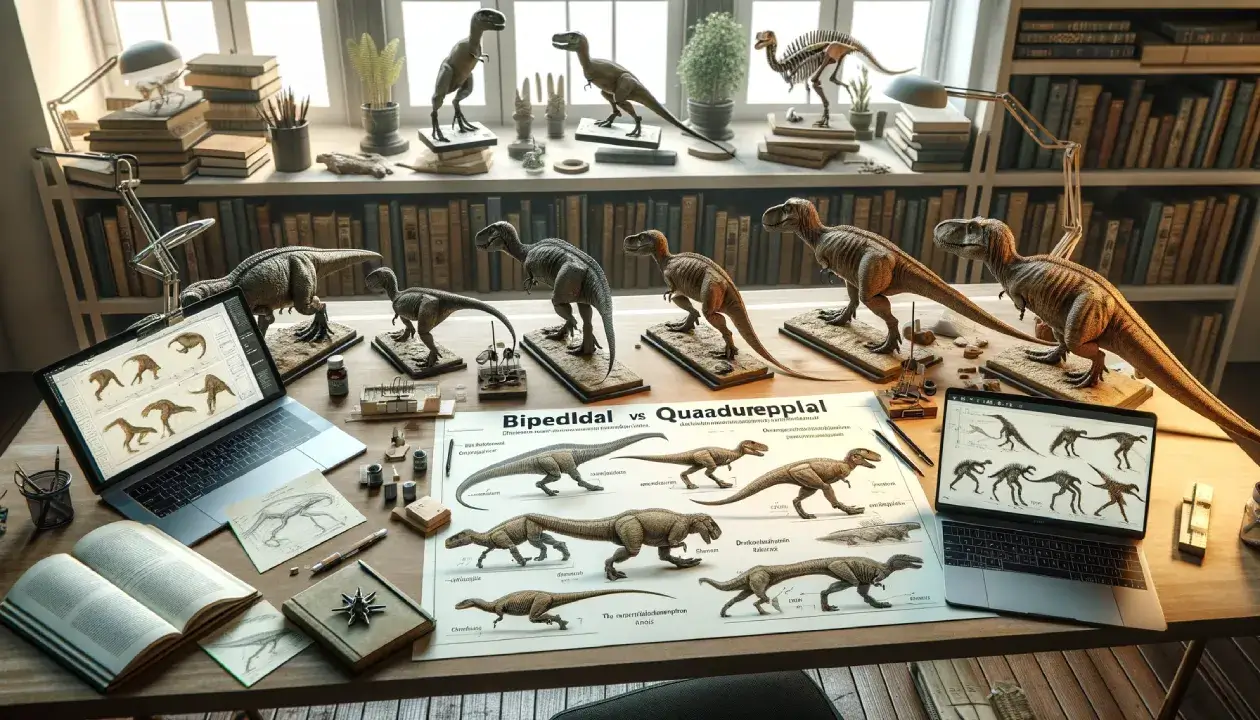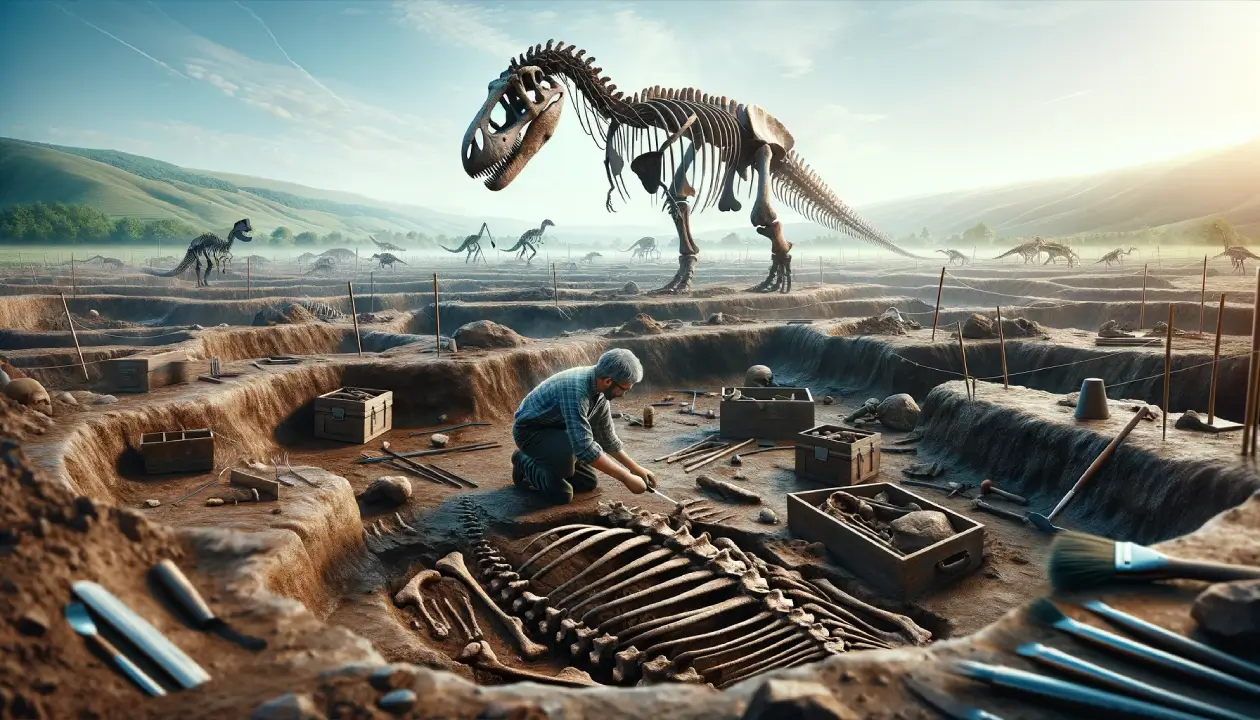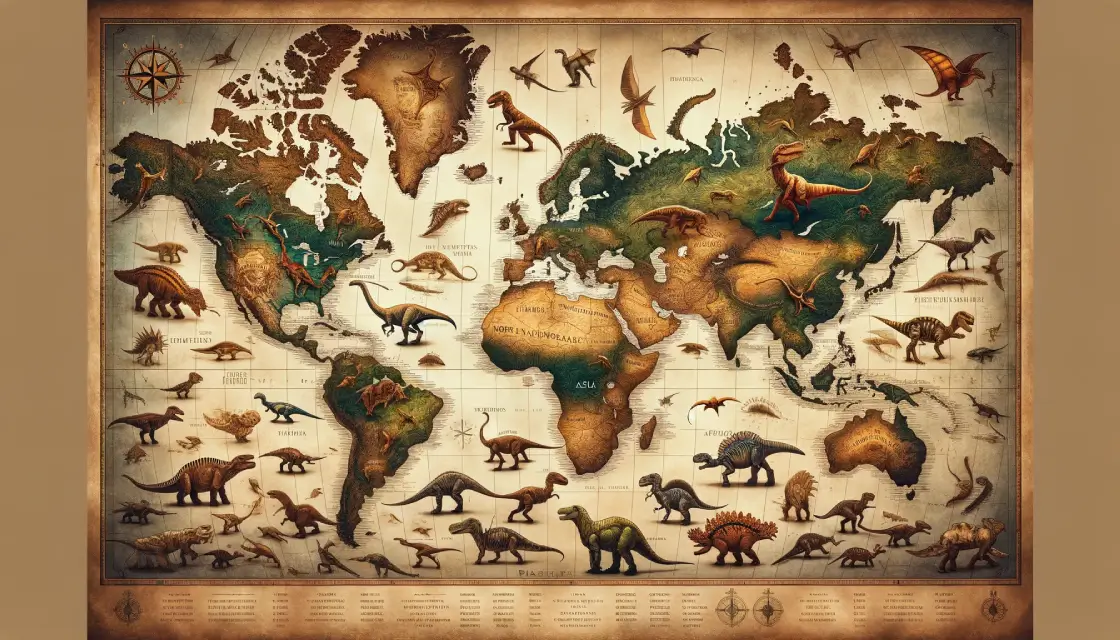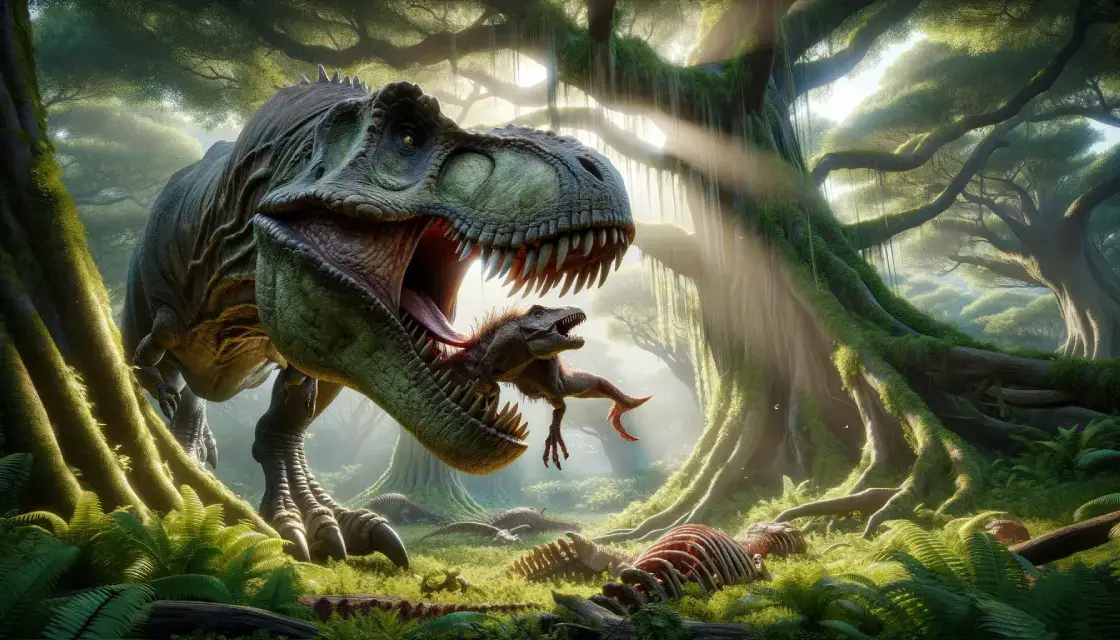Why did some dinosaurs evolve to walk on two legs while others remained on four? How did their movement influence their survival, hunting strategies, and even social behaviors? These questions are not just intriguing to scientists; they also captivate anyone curious about the natural world.
So why understanding dinosaur movement matters?
At first glance, the way dinosaurs moved might seem like a topic reserved for paleontologists and history enthusiasts. However, this subject offers fascinating insights not just about these ancient creatures, but also about the evolution of life on Earth and the dynamics of our planet’s ecosystems.
| Takeaway | Details |
|---|---|
| Many dinosaurs were quadrupedal | Quadrupedal dinosaurs like Brachiosaurus and Stegosaurus walked on four legs for stability. |
| Some dinosaurs were bipedal | Velociraptor, T-Rex and other carnivores used two legs for speed and agility. |
| Anatomy influenced movement | Bones, joints and muscles enabled different movement abilities. |
| Tracks and technology reveal secrets | Fossilized tracks and computer models provide unique insights. |
| Movement adapted to lifestyles | Aquatic, flying, running – movement matched dinosaur’s needs. |
How dinosaurs moved
The majority of dinosaurs were quadrupedal, walking on all four legs. This category included:
- Giant, long-necked herbivores like Brachiosaurus: These massive creatures relied on their four sturdy limbs to bear their immense weight, providing good stability.
- Other quadrupeds: Colossal dinosaurs such as the heavily armored Stegosaurus and the plate-backed Ankylosaurus also fell into this category.
In contrast, some smaller meat-eating dinosaurs like the swift Velociraptor and fearsome Tyrannosaurus rex (T-Rex) were bipedal, characterized by:
- Walking on powerful hind legs: This posture allowed them to run at high speeds, essential for hunting.
- Front limbs free for grasping: Their forelimbs were used for capturing and tearing into prey.
- Speed capabilities: Biomechanical models suggest that these predators could reach speeds over 50 km/h in short bursts.
The postures of these two groups were markedly different. Quadrupedal dinosaurs like Brachiosaurus often had a sprawled walking stance with limbs extending outwards, enabling them to support their large size. In contrast, bipedal carnivores like T-Rex had a more upright posture with legs beneath their bodies, enhancing their speed and agility.
Additionally, fossilized tracks reveal social behaviors:
- Herding: Large herbivore species often traveled together in herds, which was beneficial for protection against predators and aiding the young.
- Seasonal Migrations: These groups also made migrations easier, as they moved in search of ideal feeding areas.
These diverse movement patterns and behaviors reflect the wide array of adaptations that dinosaurs developed to thrive in their environments.

Dinosaur Movement Types
| Bipedal Dinosaurs | Quadrupedal Dinosaurs |
|---|---|
| Walked on two legs (e.g. Velociraptor, T-Rex) | Walked on four legs (e.g. Brachiosaurus, Stegosaurus) |
| More upright posture | Sprawled posture |
| Faster, more agile | Slower, but more stable |
| Smaller sizes | Much larger sizes |
| Carnivores | Herbivores |
Bipedal (Two-Legged) Dinosaurs
Well-known predators like T-Rex and Velociraptor were bipedal, walking on just their hind legs. This allowed them to run fast and use their front limbs to grasp prey. For example, some studies estimate the T-Rex reached speeds up to 25-30 mph (40-48 km/h) in short bursts.
Walking on two legs freed the front limbs for catching prey and enhanced speed. Bipedal posture also improved balance and agility compared to moving on four legs.
Quadrupedal (Four-Legged) Dinosaurs
The gigantic, long-necked Brachiosaurus and heavily armored Stegosaurus moved on four legs to bear their immense size and weight. Having four legs provided stability for large herbivores.
In massive dinosaurs, their columnar limbs kept their bodies elevated off the ground. This enabled them to easily browse tall vegetation. Smaller quadrupeds like the dog-sized Hypsilophodon may have reached speeds up to 40 mph (64 km/h).
Dinosaur Anatomy and Movement
A dinosaur’s skeletal structure and musculature were key factors governing how it could move. By examining fossilized bones and making comparisons to modern animals, scientists gain insight into how dinosaur bodies functioned.
Bones and Joints
The bones of a dinosaur’s limbs, pelvis, spine, and other parts formed a framework that enabled and constrained movement. For example, most quadrupedal dinosaurs had robust fore and hind limb bones to support their heavy weight. Bipeds like T-Rex had lighter bones in their arms but very strong hind leg bones for running.
| Type | Examples | Benefits |
|---|---|---|
| Upright hip joint | Velociraptor, T-Rex | Efficient running |
| Sprawled hip joint | Stegosaurus, Brachiosaurus | Stability for large dinos |
The joints between bones also influenced dinosaurs’ capabilities. Two-legged carnivores had hip joints that allowed their legs to swing directly under their bodies for efficient running. In contrast, sprawled hip joints gave stability to four-legged herbivores but reduced their turning capability.
Muscle Power
Powerful muscles attached to the skeleton provided the driving force for locomotion. Large tails in some dinosaurs helped counterbalance their fronts and rears as they walked. Forearm muscles allowed small predatory dinosaurs to grasp prey. Strong leg muscles enabled T-Rex to rapidly chase down victims.
Scientists look at muscle scars on bones to estimate muscle size and power. They also compare dinosaur musculature to animals alive today. This helps determine strengths, speeds, and styles of movement. For example, T-Rex leg muscles may have been comparable to an emu’s, enabling quick accelerations. In our post
Studying Dinosaur Movement
Understanding how dinosaurs moved relies heavily on studying their fossilized tracks. These approaches provide insights unavailable from simple skeleton examination.
Fossilized Footprints
Preserved dinosaur tracks give clear evidence of how these extinct animals walked and ran. Tracks show gait patterns, stride length, speed, and foot anatomy. For example, some recently discovered tracks showed T-Rex could reach 12 m/s (27 mph) during brief rapid pursuit of prey.
Fossilized tracks also reveal herd movement and behavior. Parallel tracks in the same direction show dinosaurs migrated together for long distances. Tracks of adults mixed with smaller ones indicate family groups.
Adaptations for Moving
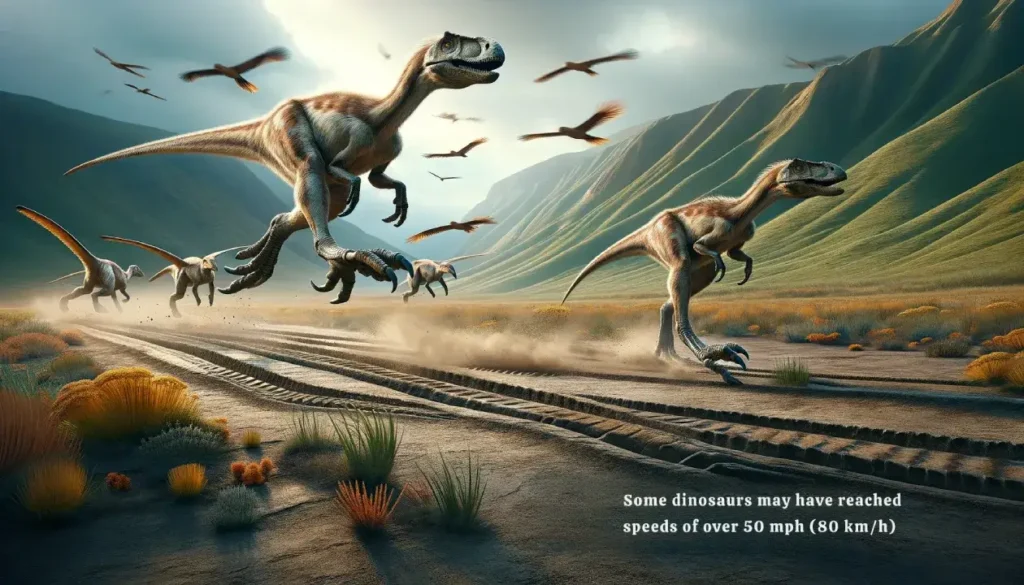
Dinosaurs adapted their movement abilities to thrive in diverse environments and fill various ecological roles.
Environment and Movement
Habitats shaped the movement adaptations seen in different dinosaurs. Large, long-necked sauropods like Brachiosaurus evolved to feed on tall trees in forests. Their columnar limbs enabled reaching vegetation high off the ground.
In open plains, swift predators like Velociraptor relied on running down prey. Their lean, agile bodies and long legs were perfect for rapid sprints across open terrain.
Aquatic environments led to unique adaptations like the paddle-like limbs of Spinosaurus for swimming after fish. Different dinosaur movements arose from specialized environmental needs.
Predators vs. Plant-Eaters
Movement abilities also differed between carnivorous and herbivorous dinosaurs. Fleet-footed predators like T-Rex evolved for energetic high-speed chasing of prey. Their lightweight bodies, long legs, and flexible joints improved agility and bursts of speed.
Massive plant-eating sauropods did not need running speed. Slow but steady walking gaits allowed traveling long distances to access abundant vegetation. Escape strategies included living in herds or using tails as weapons.
There were many different ways in which dinosaurs moved. Read more about dinosaur movement.
Fun Facts: Dinosaur Speeds and Styles
While all dinosaurs moved in ways adapted to their lifestyles and environments, some had exceptionally fast or unusual styles of locomotion.
Some speedy dinosaurs may have reached 50 mph (80 km/h) based on biomechanical analysis and fossil track measurements. This includes smaller predators like ornithomimids and early birds.
The giant Spinosaurus is thought to have been semiaquatic, using alligator-like tail movements and paddle-like feet to actively swim after prey. Other more unusual movers included pterosaurs, which flew on large membranous wings.
Conclusion
In summary, dinosaurs displayed an amazing diversity of locomotion styles matching their wide variety of shapes, sizes, and ecological roles. Quadrupedal and bipedal stances, along with specialized adaptations like paddles and wings, allowed dinosaurs to conquer terrestrial, aquatic, and even aerial environments. Analyzing dinosaur anatomy, fossilized tracks, and biomechanics continues to uncover new insights into how these majestic ancient animals moved.

